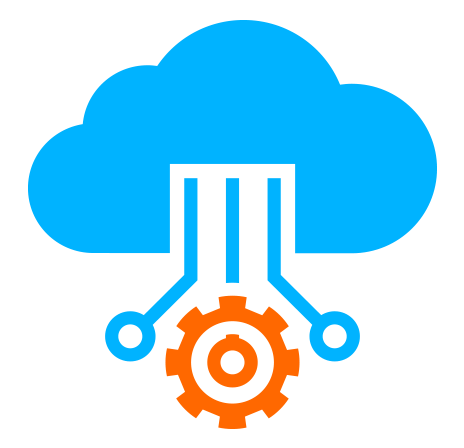 Server
Colocation
Server
Colocation
 CDN
Network
CDN
Network
 Linux Cloud
Hosting
Linux Cloud
Hosting
 VMware Public
Cloud
VMware Public
Cloud
 Multi-Cloud
Hosting
Multi-Cloud
Hosting
 Cloud
Server Hosting
Cloud
Server Hosting
 Kubernetes
Kubernetes
 API Gateway
API Gateway

In an era where a minute of downtime can cost businesses thousands of dollars, data resilience is no longer an option—it's a necessity. According to a report by IBM, the average cost of a data breach in 2023 was $4.45 million, a number that continues to rise every year. Whether it's a cyberattack, hardware failure, or a natural disaster, data loss is a reality companies must be prepared for. That’s where Disaster Recovery as a Service (DRAAS) comes in.
As businesses shift to cloud-first strategies, DRAAS has evolved to offer scalable, cloud-integrated solutions that don’t just replicate data—but ensure business continuity. Providers like Cyfuture Cloud have taken this to the next level with intelligent, budget-conscious pricing models for all business sizes.
So, how does DRAAS pricing work? And what’s the best option for your setup—be it a startup on a shared server, a mid-sized company using hybrid cloud, or a large enterprise with multiple hosting environments?
Let’s break it down.
Disaster Recovery as a Service (DRAAS) is a cloud-based solution that replicates your infrastructure—applications, data, and system configurations—so it can be quickly restored in the event of a disaster. Think of it as a digital insurance plan for your IT environment.
It’s not just about backing up data. DRAAS goes a step ahead by:
Ensuring minimal Recovery Time Objective (RTO) and Recovery Point Objective (RPO)
Keeping your servers and hosting environments in sync
Eliminating the need for a physical recovery site
Enabling automated failover and failback processes
In a world that is constantly online, downtime isn’t just frustrating—it’s costly. For industries like finance, healthcare, and e-commerce, even seconds of disruption can trigger compliance issues or revenue losses. With cloud technologies becoming mainstream, DRAAS solutions have become more flexible, affordable, and powerful than ever before.
Not all DRAAS pricing models are created equal. Some are built for startups, others for data-heavy enterprises. Here's a breakdown of the most common pricing structures:
Ideal for: Small to medium businesses with dynamic workloads.
In this model, you pay only for the resources you consume—storage, compute, and bandwidth.
Example:
You're hosting your application on a Cyfuture Cloud virtual machine. You only pay for the backup storage and failover server capacity used when the disaster recovery protocol is active.
Pros:
Cost-effective for businesses with irregular traffic
No need to pre-commit resources
Cons:
Can get expensive if you scale suddenly without proper budget planning
Ideal for: Businesses that want predictable billing and consistent data protection.
This model offers a tiered pricing plan based on the amount of data and number of servers protected.
Example:
A mid-sized firm might choose a plan that protects 10 servers, 5TB of data, and includes 24/7 support with a 15-minute RTO guarantee.
Pros:
Predictable cost structure
Easier for accounting and planning
Cons:
May pay for unused capacity
Ideal for: Virtualized environments or businesses using containerized infrastructure.
Here, pricing is based on how many virtual machines or physical servers you want to protect.
Example:
If you're using VMware or Hyper-V and hosting 25 VMs on Cyfuture Cloud, you’ll pay per VM for backup and recovery capabilities.
Pros:
Transparent and granular billing
Aligns cost with actual infrastructure
Cons:
Requires constant tracking of server count to avoid overages
Ideal for: Enterprises with hybrid or multi-cloud environments.
These plans are tailored with bespoke infrastructure mapping, dedicated support, and service-level agreements (SLAs).
Example:
A fintech company using a mix of AWS and Cyfuture Cloud may need multi-region redundancy, zero RPO, and sub-5-minute RTO.
Pros:
Fully customized protection
SLA-backed guarantees
Cons:
Comes at a premium price
When selecting a DRAAS provider, it’s crucial to understand what affects your pricing. Here's a list of major contributors:
Amount of Data to be Backed Up: More data = higher storage cost
Backup Frequency: Real-time or hourly backups cost more than daily/weekly ones
Geographic Redundancy: Multi-region storage adds cost but boosts security
Compliance Requirements: HIPAA, GDPR, or ISO-certified recovery environments
Support Level: 24/7 monitoring and managed failover options
Server Count and Type: Physical vs virtual servers, and OS compatibility
Cloud Hosting Choice: Your choice of public, private, or Cyfuture cloud affects both flexibility and cost
While many providers lock users into rigid pricing, Cyfuture Cloud offers DRAAS solutions tailored to Indian and global businesses. Whether you’re just hosting an app on a virtual server or managing an enterprise data center, Cyfuture’s flexible approach ensures:
Tiered and transparent pricing that fits your scale
Multi-layer security architecture to keep your backups encrypted and compliant
Fast failover mechanisms to reduce your RTO/RPO windows
Integrated cloud hosting, so you don’t need separate platforms for compute and disaster recovery
Dedicated account managers for enterprise support
Additionally, with data centers across India and other geographies, Cyfuture offers edge-level availability—meaning your recovery times are faster and more localized.
Selecting the right DRAAS pricing plan is less about cost and more about value. Ask yourself:
How much downtime can I afford? (This helps define your RTO)
How recent must my recovered data be? (Defines your RPO)
Am I using cloud, on-prem, or hybrid infrastructure?
What compliance regulations apply to my data?
How often do I test recovery protocols?
If you’re unsure, starting with a consultation from your DRAAS provider like Cyfuture Cloud can help you assess your vulnerabilities, define priorities, and map out a pricing plan that protects your business without inflating your budget.
In the age of cyber threats, system failures, and unpredictable climate events, having a DRAAS solution isn’t just IT hygiene—it's a smart business strategy. Whether you're managing a few cloud-hosted applications or overseeing large data clusters, investing in disaster recovery today can save you from chaos tomorrow.
When you weigh DRAAS pricing against potential data loss, the math becomes simple—protection is far more affordable than full-scale recovery. Providers like Cyfuture Cloud are redefining how businesses approach resilience, offering everything from entry-level pay-as-you-go options to fully managed enterprise recovery frameworks.
The bottom line? You can’t stop disasters, but you can outsmart them—with the right cloud-based disaster recovery plan.

Let’s talk about the future, and make it happen!
By continuing to use and navigate this website, you are agreeing to the use of cookies.
Find out more


